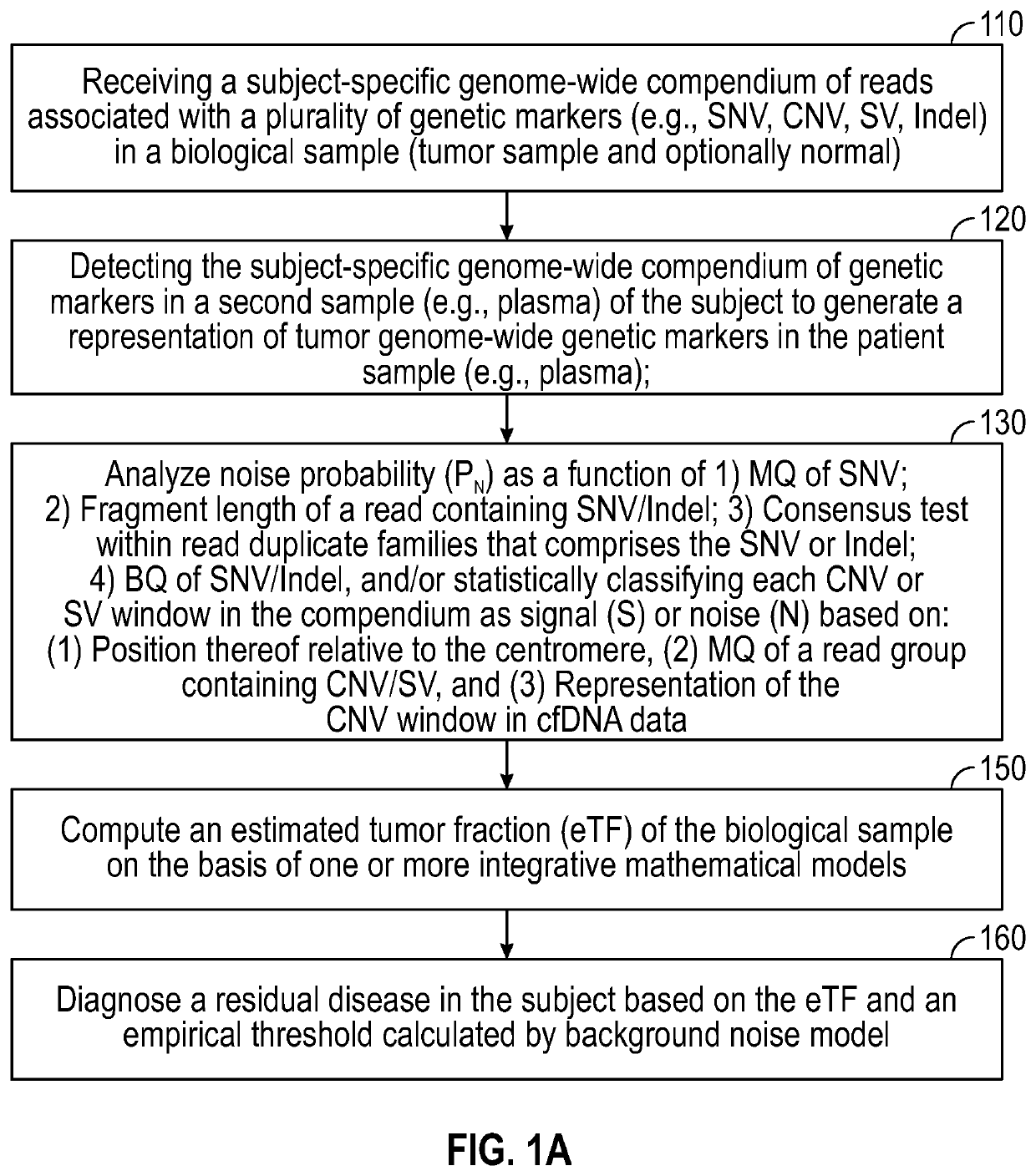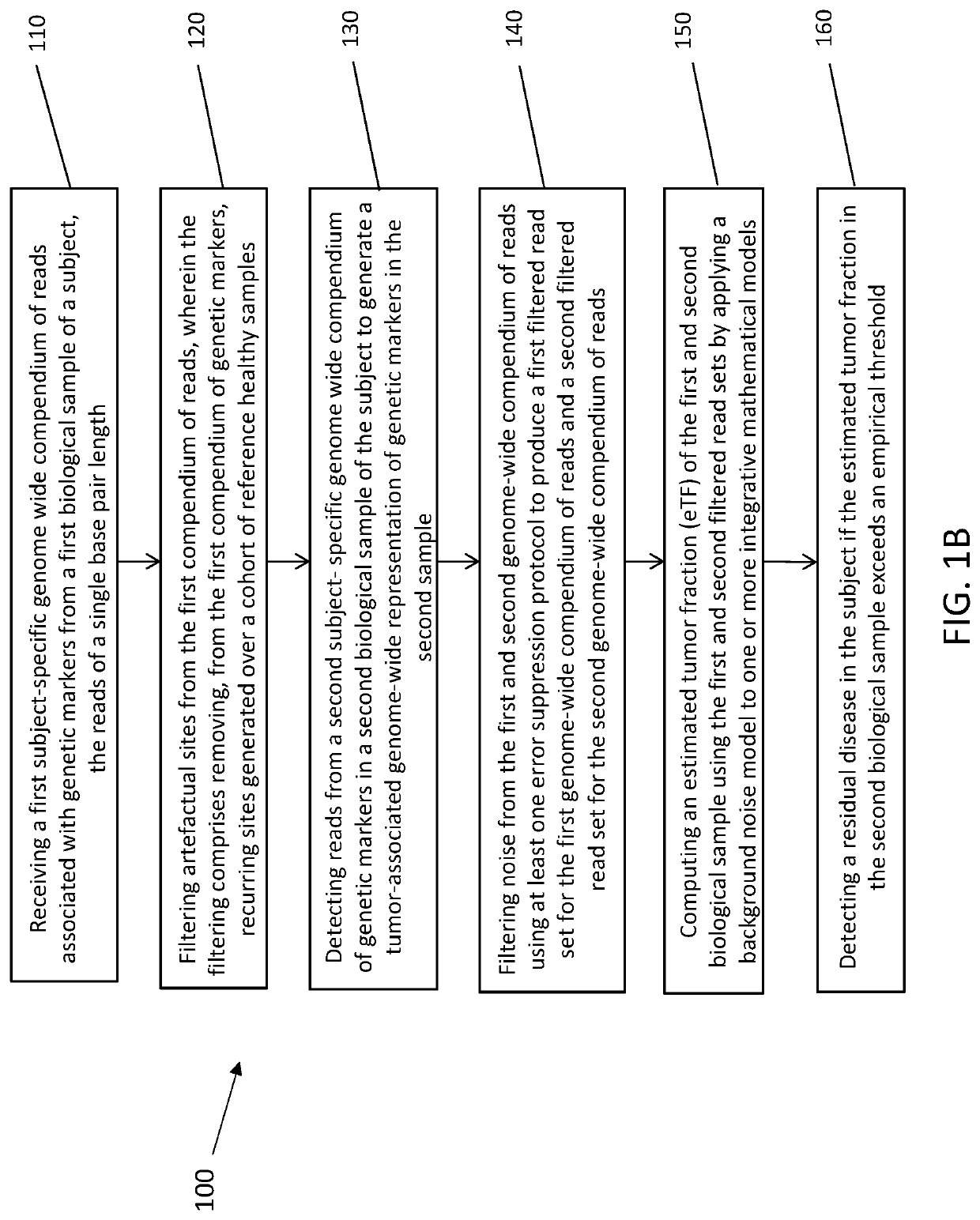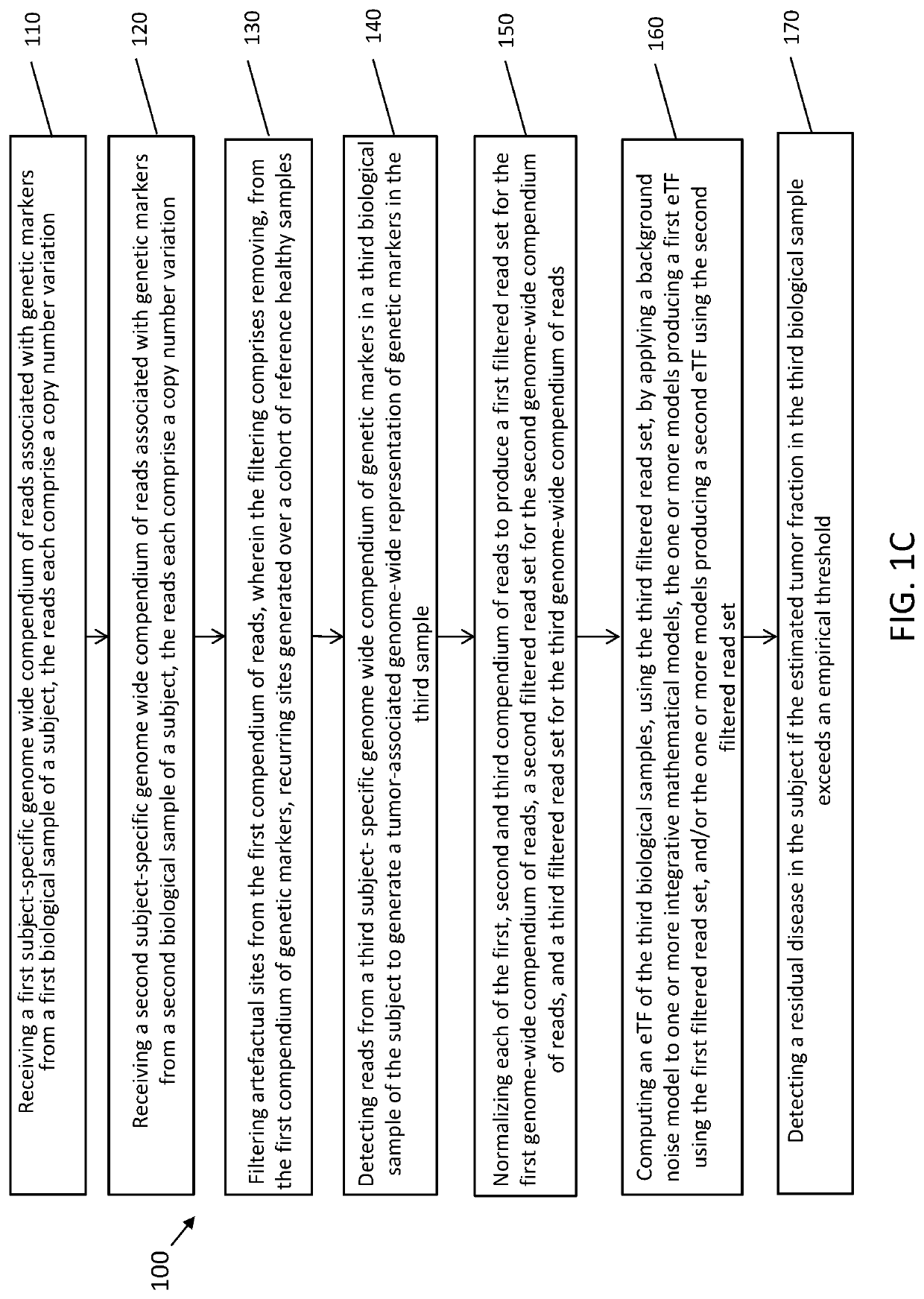Systems and methods for detection of residual disease
a residual disease and system technology, applied in the field of medical diagnostics, can solve the problems of limited input material, reduced detection sensitivity, and limited physical fragments, and achieve the effect of high mutation rate and/or high number of snps
- Summary
- Abstract
- Description
- Claims
- Application Information
AI Technical Summary
Benefits of technology
Problems solved by technology
Method used
Image
Examples
example 1
nd Systems for Detection and Validation of Tumor-Specific Low-Abundance Tumor Markers and Use of the Same in Cancer Diagnostics
[0274]The systems and methods of the disclosure are useful in the detection of minimal residual disease. As is known in the art, in contrast to metastatic cancer (which is characterized by a high disease burden and significantly elevated ctDNA), in the setting of residual disease detection, ctDNA abundance limits the use of targeted sequencing technology. Given the known limited amount of cfDNA in the setting of low tumor burden, firstly, the potential of optimization of cfDNA extraction was investigated. First, to reduce variation derived from sample acquisition and inter-individual variation, commercially-available extraction kits and methods were compared using uniform cfDNA material generated through large-volume plasma collections (about 300 cc) through plasmapheresis of healthy subjects and cancer patients undergoing hematopoietic stem cell collection....
example 2
de Integration Allows Sensitive WGS Based NSCLC ctDNA Detection of Residual Post-Surgical Disease for Adjuvant Therapy Stratification and Therapeutic Optimization
[0281]Ultra-sensitive identification of MRD with cfDNA may have fundamental prognostic implications and allow the stratification of patients for follow-up adjuvant chemotherapy. Current approaches largely seek to extend the paradigm of mutation detection of driver hotspots through increasing the depth sequencing to counter the low fraction of ctDNA in cfDNA. Nevertheless, these approaches are inherently limited by the ceiling of genomic equivalents. To overcome this limitation, genome-wide information was integrated, reasoning that pooling information across the genome will allow capitalizing on the high mutation rate in lung cancer. Accordingly, instead of relying on deeper sequencing of few sites, the breadth of mutation detection was extended across the genome to increase sensitivity. Thus, WGS was applied to base sensit...
example 3a
Integration of Fragment Size Features in SNV-Based Methods
[0293]cfDNA fragment distribution have a unique profile due to the DNA degradation during blood circulation. Healthy normal cfDNA sample show the fragment size distribution shown in FIG. 10A. Circulating DNA fragments that originate from the tumor show shorter fragment size in comparison to “normal” DNA fragments that originate mainly from apoptosis of hematopoietic cells (immune cells). Breast tumor cfDNA (red and purple) show a fragment size shift compared to normal cfDNA sample (FIG. 10B). Calculating the center-of-mass (COM) of the first nucleosome (the peak around 170 bp) show a shift to lower COM that correspond linearly to the TF. Using human tumor xenograft models (PDX) in mice show that circulating DNA that is from the tumor origin (red, aligned to human) is significantly shorter than circulating DNA that is from normal origin (black, aligned to mouse). See FIG. 10C.
[0294]To generate a robust model that can quantify ...
PUM
| Property | Measurement | Unit |
|---|---|---|
| relapse-free time | aaaaa | aaaaa |
| volume | aaaaa | aaaaa |
| volume | aaaaa | aaaaa |
Abstract
Description
Claims
Application Information
 Login to View More
Login to View More - R&D
- Intellectual Property
- Life Sciences
- Materials
- Tech Scout
- Unparalleled Data Quality
- Higher Quality Content
- 60% Fewer Hallucinations
Browse by: Latest US Patents, China's latest patents, Technical Efficacy Thesaurus, Application Domain, Technology Topic, Popular Technical Reports.
© 2025 PatSnap. All rights reserved.Legal|Privacy policy|Modern Slavery Act Transparency Statement|Sitemap|About US| Contact US: help@patsnap.com



